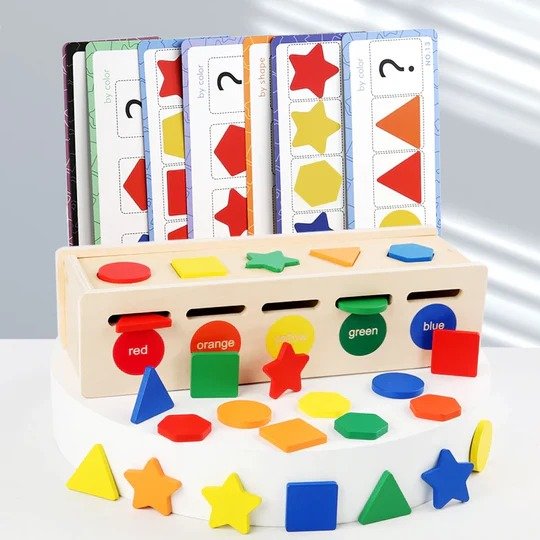Wood toys have been a staple in children’s playrooms for centuries, offering simplicity, durability, and timeless appeal. In today’s fast-paced world of technology and plastic gadgets, wooden toys stand out as a nostalgic yet practical choice for parents and educators alike. As environmental awareness grows, the shift towards eco-friendly products like wooden toys is becoming increasingly popular. Not only do Wood Toy foster creativity and imagination, but they are also better for the planet and are often more durable than their plastic counterparts. This article will explore the various benefits and importance of wood toys, from their role in child development to their sustainability and educational value.
Wood Toys and Child Development
One of the greatest benefits of wood toys is their ability to support child development. Wooden toys, by nature, are simple and encourage children to use their imagination. Without flashy lights or sounds, children are prompted to create their own narratives and situations during playtime. This type of open-ended play is crucial for developing creativity and problem-solving skills in young minds.
Moreover, wooden toys often require children to manipulate objects, which enhances their fine motor skills. Activities like building with blocks or assembling puzzles help strengthen hand-eye coordination and dexterity. These toys also offer tactile engagement, allowing children to feel the texture and weight of natural materials. This sensory feedback enhances cognitive and physical development as children learn through hands-on interaction with their toys.
Eco-Friendliness of Wood Toys
In a world where environmental sustainability is becoming increasingly important, wood toys offer a more eco-friendly alternative to plastic. Many wood toys are made from sustainably sourced wood, ensuring that they are renewable and environmentally responsible. Unlike plastic toys, which can take hundreds of years to decompose, wood toys naturally break down over time, reducing waste in landfills.
In addition, wooden toys are often free from harmful chemicals like BPA, phthalates, or lead that are found in some plastic products. This makes them a safer choice for children, particularly for younger ones who tend to put toys in their mouths. The natural materials used in wood toys are biodegradable and recyclable, further contributing to their environmental benefits.
Durability and Longevity of Wood Toys
Another significant advantage of wood toys is their durability and longevity. Unlike plastic toys, which can easily break or wear out, wooden toys are built to last. Their sturdy construction ensures that they can withstand rough play and still remain intact. This makes them a practical choice for families who want toys that will last through multiple children or even generations.
The longevity of wood toys also means they can be passed down, making them a valuable family heirloom. Because they are less prone to damage, parents do not have to worry about replacing wooden toys as frequently as plastic ones. This not only saves money in the long run but also contributes to a more sustainable lifestyle by reducing consumption and waste.
Educational Value of Wood Toys
Wood toys have long been praised for their educational value, providing children with a variety of learning opportunities. Many wooden toys are designed to teach basic concepts such as numbers, shapes, colors, and letters. For example, wooden puzzles and sorting toys help children develop cognitive skills like problem-solving and logical reasoning. These toys also improve concentration and focus as children work through the challenges of fitting pieces together or balancing blocks.
Additionally, wooden educational toys like counting beads or abacuses introduce children to early mathematical concepts. By offering hands-on learning experiences, wood toys help children develop a stronger understanding of abstract ideas through tangible play. Many parents and educators appreciate how wooden toys promote STEM learning (science, technology, engineering, and mathematics) in an engaging and accessible way.
Wood Toys and Imaginative Play
One of the most compelling aspects of wood toys is their ability to inspire imaginative play. Without the distractions of technology, flashing lights, or pre-programmed sounds, wooden toys leave room for children to create their own stories and adventures. A simple set of wooden blocks can become a castle, a car, or a rocket ship in the hands of a child. This freedom to invent and explore promotes creativity and independent thinking.
Imaginative play is essential for social and emotional development, as it allows children to explore different roles, scenarios, and emotions in a safe environment. Wood toys, by their simplicity, encourage children to engage in pretend play, where they can experiment with new ideas and perspectives. This type of play helps children learn to express themselves, solve problems, and interact with others in meaningful ways.
The Role of Wood Toys in Montessori Education
Wood toys are widely used in Montessori education, a teaching philosophy that emphasizes independence, exploration, and hands-on learning. Montessori classrooms often feature simple, natural materials like wood to encourage children to focus on the learning process rather than the toy itself. The tactile nature of wooden toys fits well with Montessori principles, as these toys encourage children to explore and manipulate objects in the physical world.
Wood toys used in Montessori settings are often designed to promote self-directed learning. For instance, wooden stacking toys, sorting boards, and puzzles encourage children to experiment and discover solutions on their own. These toys help foster a sense of achievement and build confidence in their abilities. By engaging children in activities that develop both cognitive and motor skills, Montessori wood toys provide an enriching educational experience.
Health and Safety Benefits of Wood Toys
Parents are increasingly concerned about the safety of the materials used in children’s toys, especially as awareness of toxic chemicals in plastic products grows. Wooden toys, particularly those made from untreated, natural wood, are free from harmful chemicals and are often finished with non-toxic paints and stains. This makes them a safer choice for young children, especially during the teething stage when everything tends to end up in their mouths.
Furthermore, wooden toys are less likely to have sharp edges or small parts that could pose choking hazards, as many are handcrafted with precision and care. The solid, natural construction of wood toys provides a safe and reliable play experience, offering parents peace of mind when choosing toys for their little ones.
Conclusion
In conclusion, wood toys offer a range of benefits that make them a wise investment for families and educators. Their durability, eco-friendliness, and educational value set them apart from mass-produced plastic toys, providing children with a rich and engaging play experience. Wooden toys foster creativity, imaginative play, and cognitive development while promoting a safer and more sustainable lifestyle.
The timeless appeal of wood toys ensures that they will continue to be cherished by generations of children. Their sturdy construction and natural materials make them long-lasting, reducing the need for constant replacements. As awareness grows about the importance of sustainability, wooden toys are becoming an increasingly popular choice for families who want to make a positive impact on the environment.
For parents and caregivers looking to invest in toys that not only entertain but also educate and inspire, wood toys remain a valuable choice. Their simplicity, safety, and role in child development make them an essential part of any toy collection. Whether used for imaginative play, cognitive development, or early education, wood toys provide endless opportunities for learning and growth, all while offering a connection to the natural world.
Read More on: fetlife




